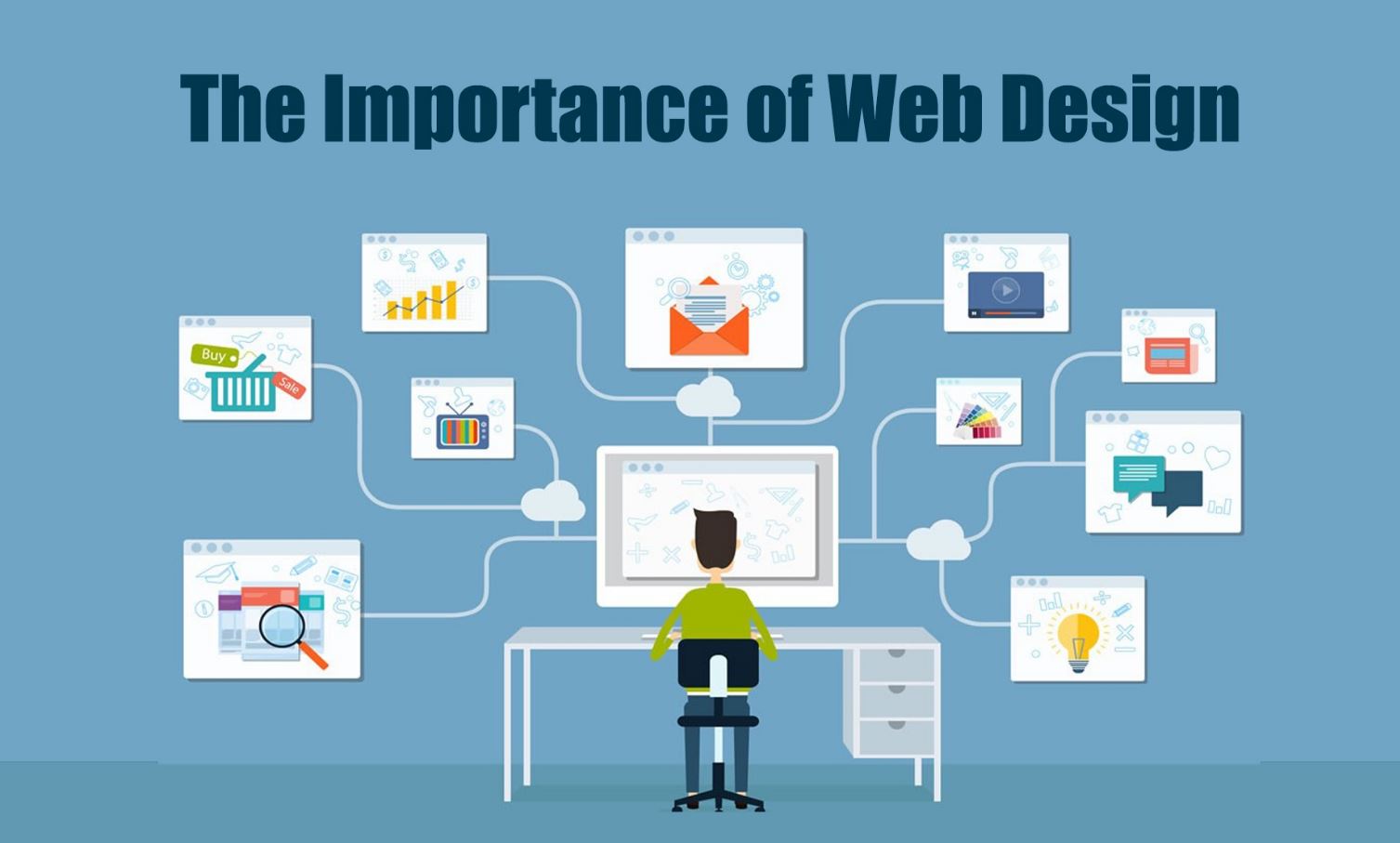Exactly How Effective Website Design Can Increase User Experience and Conversions
In the progressively competitive digital landscape, reliable internet style plays an essential duty in improving user experience and driving conversions. As we explore the vital aspects that add to effective internet style, it ends up being apparent that the impact on user fulfillment and conversion prices is extensive.
Significance of User-Centric Style
In the realm of website design, focusing on user-centric style is vital for developing reliable electronic experiences. This method focuses on recognizing the demands, preferences, and habits of individuals, making certain that digital user interfaces are user-friendly and easily accessible (Web design). By incorporating user responses right into the design process, internet developers can craft experiences that reverberate with their target audience, inevitably causing boosted involvement and complete satisfaction
User-centric style stresses functionality, which is essential for preserving users and decreasing bounce rates. When users can browse a website effortlessly, they are most likely to explore its web content and exchange customers. A user-centered approach cultivates depend on and reputation, as users feel that their requirements are valued and dealt with. This not only enhances their experience yet likewise urges brand name commitment.

Crucial Element of Effective Design
Efficient format offers as the backbone of user-centric web design, converting customer needs into aesthetic frameworks that assist in communication. A well-organized format prioritizes material via a clear pecking order, leading individuals' eyes to vital information. This hierarchy is often established utilizing dimension, shade, and spacing, guaranteeing that essential elements stand apart.
An additional key component is making use of whitespace, which prevents congestion and improves readability. Web design. Whitespace enables elements to take a breath, making the total style appear cleaner and simpler to browse. Additionally, consistency in style elements, such as colors and fonts, fosters knowledge and depend on, enabling individuals to browse the site with higher simplicity
Grid systems can likewise be invaluable, supplying a structure that aligns content logically and aesthetically. This alignment enhances the customer experience by developing an organized aesthetic flow. Furthermore, adaptability in layout-- like receptive layout-- guarantees that websites execute well across different gadgets, accommodating diverse customer preferences.
Eventually, an efficient design not only captivates users however also urges them to engage even more deeply, ultimately fulfilling and driving conversions service goals. By concentrating on these crucial elements, designers can produce designs that resonate with individuals and improve their overall experience.
Navigational Best Practices
User-friendly and clear navigation is essential for boosting customer experience on a website. A well-structured navigating system allows customers to find info quickly, which directly influences their complete satisfaction and possibility of conversion - Web design. Applying a hierarchical framework is crucial; use categories and subcategories that practically team relevant content, making it less complicated for site visitors to explore
Make sure that menus, switches, and links keep harmony in design, color, and positioning across all pages, offering users with a familiar framework as they navigate. Instead of generic terms, choose for clear tags that accurately reflect the content, helping individuals in making notified decisions.

Mobile Responsiveness and Accessibility

Access, on the various other hand, concentrates on making web sites usable for individuals with impairments. This includes adhering to standards such as the Web Material Access Guidelines (WCAG), which attend to issues like color contrast, text size, and key-board navigation. By implementing these criteria, web designers can create inclusive experiences that accommodate a more comprehensive target market, therefore improving user interaction and complete satisfaction.
Furthermore, mobile responsiveness and availability not only boost customer experience yet also favorably effect search engine positions. Search engines prioritize mobile-friendly and available sites, making them more probable to appear in appropriate search outcomes. Spending in these facets of internet style not just satisfies customer needs however also contributes to total company success via boosted exposure and improved conversion rates.
Measuring Success Via Analytics
Tracking user communications and actions via analytics is necessary for assessing the success of a website. recommended you read By leveraging devices such as Google Analytics, businesses can collect critical information that reveals exactly how customers involve with their site. Metrics such as bounce rates, typical session period, and conversion prices give understandings right into individual behavior and can highlight areas for enhancement.
Comprehending customer demographics and web traffic resources better improves an internet site's performance. This information permits web developers to tailor web content and style elements to much better fulfill the demands of their target audience. Furthermore, tracking specific user journeys aids identify prospective bottlenecks in the conversion channel, making it possible for companies to maximize their website design as necessary.
Routinely assessing this analytics data is important for continuous enhancement. A/B testing various design aspects can give concrete evidence of what resonates with individuals, enabling for informed decisions based upon real-world efficiency. Ultimately, determining success with analytics not just boosts user experience but additionally drives conversions, ensuring that internet design efforts align with service objectives. In an electronic landscape where competition is tough, taking advantage of the power of analytics is essential to maintaining a effective and easy to use site.
Final Thought
In verdict, efficient web style plays an essential duty in boosting individual experience and driving conversions. By More Help prioritizing user-centric principles, applying essential layout aspects, and guaranteeing intuitive navigating, websites can involve a diverse audience. Mobile responsiveness and availability more add to a smooth interaction for all individuals. Ultimately, gauging success through analytics enables for continual enhancement, ensuring that style approaches remain straightened with individual requirements, therefore promoting service growth and success.
In the significantly competitive electronic landscape, efficient web style plays a crucial duty in boosting user experience and driving conversions. By incorporating customer responses right into the design procedure, web developers can craft experiences that reverberate with their target audience, inevitably leading to increased interaction and fulfillment.
Inevitably, the significance of user-centric design lies in its capability to create significant interactions that drive conversions and foster long-lasting partnerships with users, making it an important element of successful internet layout techniques.
Inevitably, gauging success with analytics not just enhances user experience however additionally drives conversions, guaranteeing that web layout efforts straighten with service goals.In final thought, effective web design plays a crucial role in improving customer experience and driving conversions.